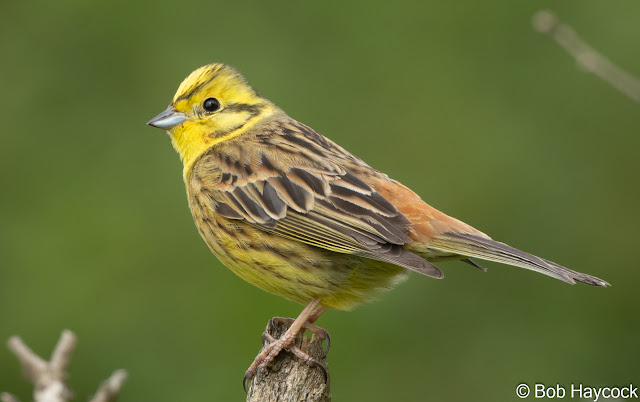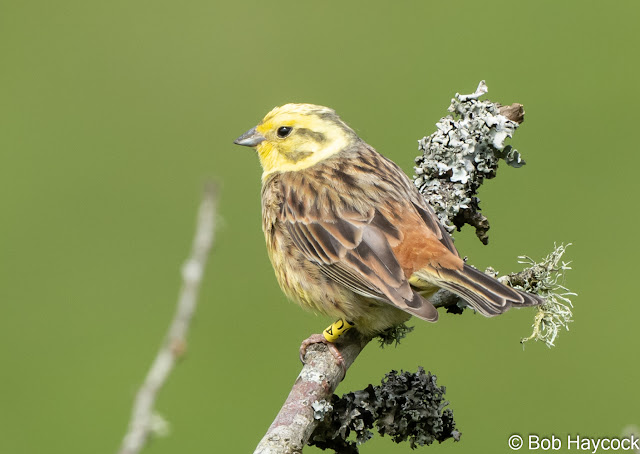It was interesting to read the post about yellowhammers at Little Porthclew.
We have recently walked various minor roads and paths in tetrad SS09J (which includes Little Porthclew plus areas around Freshwater East and Hodgeston) to look for breeding yellowhammers. We repeated a survey undertaken last spring by Chris Orsman, walking the same routes. We noted a minimum of 14-16 yellowhammer territories, based on presence of singing males and/or pairs. These were ones seen from public rights of way. It is likely that others would have been present in areas we could not visit.
It is pleasing (helped by some appropriate habitat management) that this area continues to support an important yellowhammer population. One of us (Bob) first became aware them in the area 40-years ago when, at the time, living in Lamphey. Hopefully, with the help of some post-breeding and winter feeding, the population will continue to prosper here and expand into other areas.
On the way to Martin’s Haven early yesterday morning, a couple of yellowhammers were observed singing in hedgerow trees near Hasguard Cross. Yellowhammers were reported near Hasguard Cross last summer, so hopefully there is a breeding population there too.
A reminder to anyone observing yellowhammers to look for colour-ringed birds. Mike Sherman would be pleased to have records of any sightings.
 |
| These two males were not at Freshwater East, but near Roch a few weeks ago |
On the coast this week (when looking for fledged choughs and counting seabird colonies etc) purple sandpipers were noted on barnacle-covered rocks at Cemaes Head on 17th June (2 birds) with 2 turnstones. There was a single purple sandpiper on rocks near Stackpole Head yesterday. Four puffins were occupying cliff-crevices in usual places there.
On Caldey today, it was fascinating to hear quite distinctive calls of a water rail in the base of dense scrub on the east side of the island, not far from the lighthouse. One was also heard calling in the same area during a visit there in late May. Might a pair be breeding there? The habitat is quite dense but dry – very odd!
